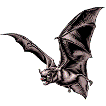Museum, University of Nebraska State

University of Nebraska State Museum: Mammalogy Papers
Document Type
Article
Date of this Version
September 1986
Abstract
Using fluorescent pigments, we were able to gather accurate information about the use of habitat and movement patterns of small nocturnal rodents. Use of habitat is strongly affected by the patchiness of vegetation of the sandhills. Microtus ochrogaster occupies the dense grass, Dipodomys ordii occupies the open sandy area, and Perognathus hispidus and P. flavescens occupy a mixed grass-forb zone. Advantages of the fluorescent method over more traditional methods of determining habitat use are presented. There are significant differences in the trails of species at the fine 10-cm scale, but these differences disappear at a larger 3-m scale. The significance of this difference is discussed in the context of the foraging strategy of the rodents and optimal pathways.


Comments
Published in The Prairie Naturalist: Quarterly Journal of Research on the Natural History of the North American Great Plains, volume 18, No. 3, pp. 129-141. Used by permission.
Homepage = http://www.fhsu.edu/biology/pn/prairienat.htm